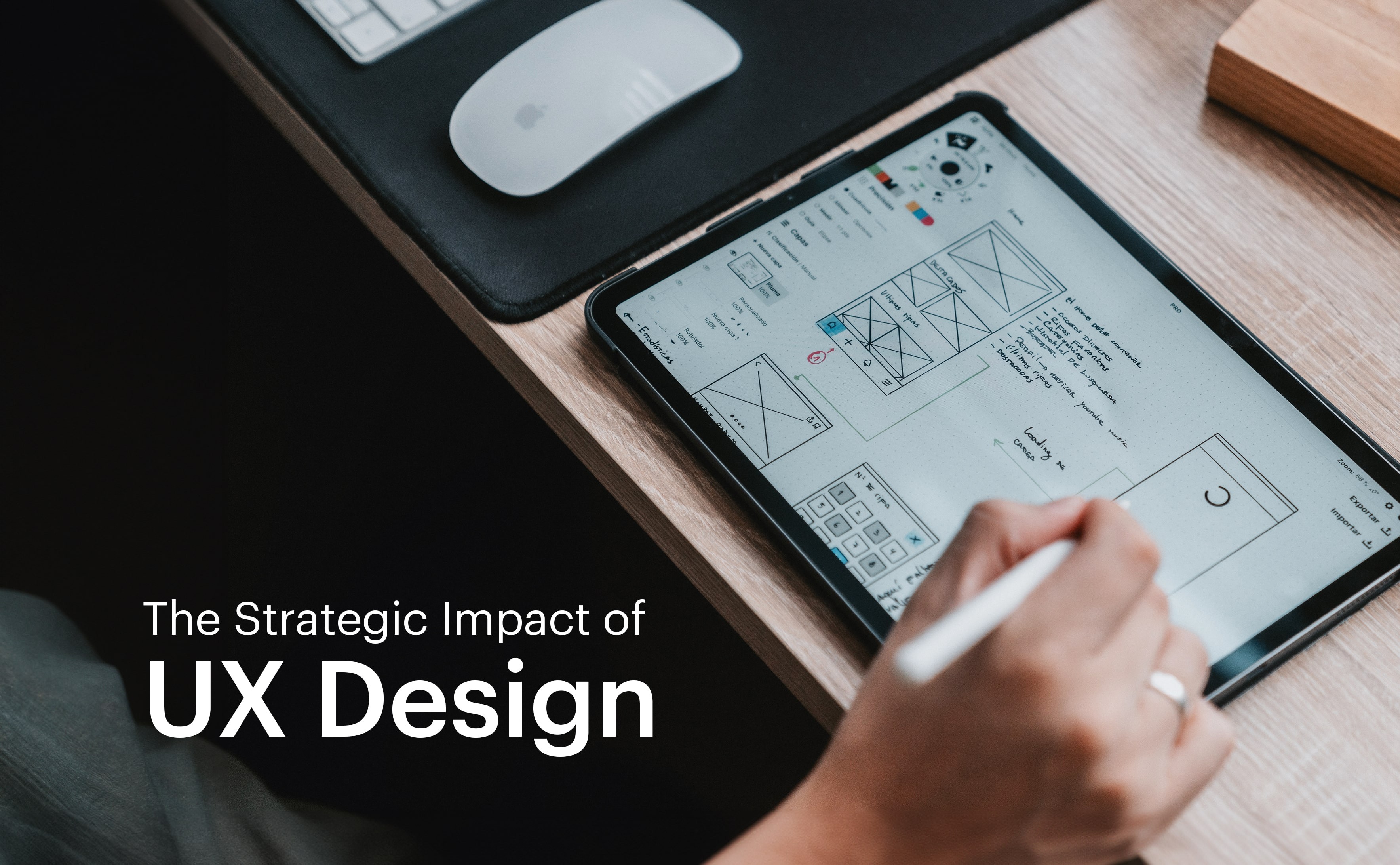The Strategic Impact of User Experience Design on Business Growth

The user experience is pivotal not only because it makes the software highly usable but also because it makes related experiences like promotions, branding, and after-sales assistance easier. Apart from moving towards a clean UX design, developing skills to manage perfection is necessary to avoid chaotic circumstances.
A close inspection of the iterative processes can give you insights into whether the user experience works as expected. Winning UX as desired is not a result of using a single tool or technique. Rather, it is a collective combination of persistent efforts that lets you attain improvement, with the focus on making it even better in the future.
This article takes you through the importance of cracking the UX maze and discusses user experience design strategies to help you ensure business growth.
Revealing Everything UXD Doesn’t Talk About!
Before we get to the topic of what UXD is all about, let’s ponder what it isn’t about. It doesn’t boast about the interface design but considers different factors put together. Instead of acting as a simple checkbox, it works based on several aspects, like understanding users, adapting to their behaviour, and improving the products or services with time.
User experience design surpasses the journey of technology and determines our interaction with the world that surrounds us. It doesn’t just depend on usability; it aligns with the business objectives. Maintaining a balance between business goals and user needs is crucial to improving the user experience.
The perfect essence of UXD lies in finding that sweet spot, where the design serves the needs of users and resonates with the brand, to create the right combination of user-centricity and strategic alignment.
User experience design is a comprehensive discipline that adopts a multifaceted approach that acknowledges user experience as the integration of technology, business objectives, and human behaviour.
Why Should We Care About UXD?
User experience design is all about how people interact with what you create. Human experiences leave a long-lasting impression in our minds—this is why a negative experience forces us to avoid repeating it at any cost.
User experience design should be aligned with human needs—provide an answer to questions, treat users with respect, and make sure the user interactions are not just confined to task completion but include a sense of enjoyment.
UXD holds the remarkable power to trigger interactions that reach a level where not only the functional needs are met but also the crucial emotional needs of individuals are satisfied. It fosters a sense of fulfilment and connection while valuing people, their aspirations, and their experiences.
Having SEO and UX go hand in hand can help you take a leap towards fulfilling the SEO needs of the design while improving the organic traffic to increase lead generation in business.
Identifying the Core Elements of User Experience Design
A UX design specialist works to build a connection between the requirements of the user and the need to lay the finest user experience standards. This process consists of five core elements that make the UX journey smoother.
Strategic Approach
A conversation ignites everything—the user experience begins when we understand the expectations of the users and align them with the diverse objectives. UX strategy helps to develop more interactive and engaging experiences at each customer touchpoint.
Scope
This aspect defines the journey of transforming user’s needs and business objectives into the foundation for functionality and content. It manages the place where understanding and perceptions vary considerably, which ranges from how the project manager interprets the design to what would be the creative vision of the designer and how the developer implements it.
Scope determines what the client needs with the following constituents: functional specifications that describe the product’s features, and content requirements that describe the essential elements such as data, text, audio, videos, etc. that offer value to the users.
Structure
After the scope is set, the structure comes into action. Interaction design and information architecture portray how the system responds to the user’s actions. Interaction design shapes the user's journey through patterns and sequences, guiding them to the right options. Information architecture takes charge of the volume of content, organising, arranging, and prioritising it effectively.
Skeleton
The skeleton of the system represents the essential design information and provides a preview of the flow of information. This is where interface design steps in to determine how to present visual elements optimally. The navigation design simplifies user interaction on the screen, implementing an intuitive process and information flow.
Surface
A layer of visual design completes the entire UXD process, which involves the careful choice of images, colours, typography, and visual effects to contribute to a specific purpose. This could range from improving the meaning of the content to helping users walk through the data, reducing the overall cognitive load, encouraging intuitive learning, etc. It also includes making sure that the design is appropriate both socially and culturally while aligning with the context and preferences of the target audience.
Also Read: The Art of Drafting the Best UI/UX Design
Achieving the Balance to Help You Crack the Right UX Design Strategy
Just as user interface works on the look, interactivity, and appeal of a web page or product screen, UX covers the experience with a website, product, or platform. Maintaining an equilibrium between what the client demands and the standard UX principles becomes a crucial factor in building an impressive UX design. It involves the implementation of the following strategies:
- We closely observe and develop an understanding of the UX design aspects that impact users. This drives us to make more refined and informed decisions while implementing the design.
- A strong portfolio of works that showcase our efforts towards creating user-centred designs has helped us to place a clear emphasis on the user’s pain points.
- Design decisions take birth with consistent usability testing. We discuss the outcomes with the clients and analyse the real-world impact of the input, regardless of whether it is positive or negative.
- Our team makes an honest effort to communicate the client’s feedback with the team and incorporate it into the design while also accommodating the design standards.
- Through the visualisation of design principles, we incorporate prototyping in advance. It enables the clients to interact with the planned design so that potential concerns can be addressed in advance.
The requirements and specifications that clients put forward for a UX design should be seriously considered, as these views should go hand-in-hand with established business standards.
Significance of User Experience in the Modern Business Sphere
Digital Experiences
As business becomes more digital-oriented, building remarkable digital experiences becomes crucial. A streamlined user experience can contribute to the digital success of a company.
Mobile Applications
Mobile device users have contributed much to the increased demand for mobile applications. Users want an effortless yet engaging experience on their devices, which makes UX design extremely significant.
E-Commerce Storefronts
Online shopping lays the foundation for the user experience. A well-designed E-commerce platform improves the shopping journey, which results in high-end conversions and increased customer loyalty.
SaaS and Software
SaaS (Software as a Service) products rely on user satisfaction and user adoption. User retention demands an interface that is highly user-friendly and promotes frictionless interactions.
Healthcare and Education
User experience plays a vital role in sectors like education and healthcare. With intuitive user-centric e-learning software, apps, and healthcare platforms, you can multiply the outcomes and improve user engagement.
Technological Innovation
With the evolution of technology, innovation-led interfaces and platforms have also gained attention. Designing for AR (Augmented Reality), VR (Virtual Reality), and voice interaction demands in-depth expertise in UX design techniques.
Also Read: Do’s and Don’ts of Web Designing
Leverage UX with a Customer-Oriented Design Approach
User experience design is a field that adopts a multidisciplinary approach—it deals with demands and user preferences, which lets you create fulfilling experiences with your products or services.
The design phase is a sum of many processes, which include the formation of ideas, prototyping, testing, deployment, and continuous analysis. With an appropriate UXD in place, you can trigger user satisfaction, increase conversion rates, save on costs, enhance brand perception, and gain a competitive edge.
If you don’t have an in-house UX design team or require specialised assistance to manage the UX design aspects of your business, let us talk! We are here to help you with UX design consulting services and a customer-oriented design strategy based on your needs.
- Top 20 Advantages and Disadvantages of Social Media
- Top Advantages, Disadvantages and Limitations of Ecommerce - A Complete Guide
- Top 20 Advantages and Disadvantages of Digital Marketing
- Scope of eCommerce: The Future of Online Shopping in India
- Top 11 Advantages and Disadvantages of RDBMS You Should Know
Discover Digital Transformation
Please feel free to share your thoughts and we can discuss it over a cup of tea.



